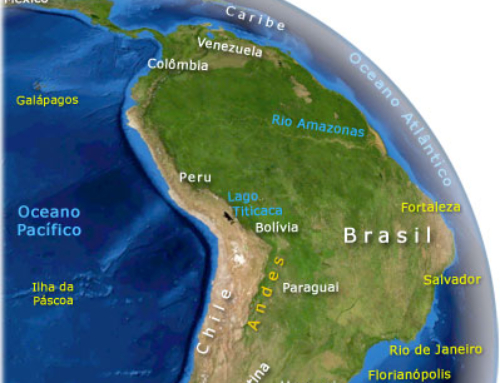Introduction
One of the most important strategic decisions a company has to take is the way they will support and increase their activities in the long-term. For this, the firms have multiple opportunities abroad their frontiers. In this essay we will review some Foreign Market entry modes and considerations to take in account to capture some interesting opportunities.
Article Review
There are different theories that attempt to explain how Multinational Enterprises (MNE) choose their initial modes of entry to foreign markets and if they will stay and increase their presence. According to Hennart (2009) the theories of Anderson and Gatignon and the Uppsala internationalization model are one of the most influent and point that MNE take the decision to enter to a foreign countries based on a tradeoff relative to their need of controlling the operation and the risk involved in that action. As they get experience in that host market they tend to increase the exposure. By the other hand, the Eclectic Theory tells us that the decision depends on the company´s transferable specific advantages and the local country specific advantages (CSA) like access to natural resources, low cost labor (Hennart, 2009) or tax exemptions. This means that the firm will serve the foreign markets choosing between exporting to them or enter through local production depending on the relative strengths of the CSA.
Hennart (2009) makes the observation that these models (MNE-centric theories) tend to explain that the choice of entering to a foreign country is unilaterally determined by the MNE and don´t pay much attention or overlook at the local owners of the complementary host assets, which brings us to an alternative model that goes beyond the wholly owned subsidiary (WOS) an equity joint venture (EJV) or licensing agreements (LA), the “bundling model” that explains that the decision to enter a specific market is determined simultaneously by MNE and the owner of the local complementary assets. This means that the MNE will exploit their advantages like “ideas, information of various types, new management techniques, business models, and new products and processes” (Hennart, 2009) bundled with the local complementary assets. The form of the MNE to enter to this local market (WOS, EJV or LA) will depend on the efficiency of the complementary assets bundle.
Another perspective in looking at the modes used to enter foreign markets is concentrating on the structural and strategic characteristics of the MNE, his strengths and weaknesses and how this is aligned with the local market´s environment (Brown et al., 2003). The competitive advantages of a company are located within their own resources and the ones they can acquire; this could mean that the choice of foreign market entry is highly tied to the ability of the MNE to transfer these competitive advantages into the foreign market (Brown et al., 2003).
When thinking in a collaborative entrance to a foreign country, another key factor is the ability of the local partner to absorb the know-how of the incoming MNE; this collaboration can increase the returns on their investment, lowering the risks and costs because of firm´s little experience and knowledge of the local market. Obviously, the qualifications and reliability of local partner has a high impact on the choice of the entry mode (Brown et al., 2003).
The study of Brown et al. (2003) suggests that the ownership dimension in this collaboration is directly related with the absorptive capacity of the local market. For example, if we have a competent local partner (high competitive advantages absorptive capacity) the foreign market entrance will be the management entry mode, especially with a franchise or a marketing network affiliation. The opposite occurs when the local market has low absorptive capacity, the firm uses to enter via ownership, and example of this is when the training costs of managers and employees are too high.
In the perspective of screening and evaluating foreign markets, we find some interesting tools, facing the dilemma on where to invests, in what place and with what model. “There are vast differences among countries in term of size, income, language, infrastructure, market access, culture, and many other important dimensions” (Cavusgil et al., 2004).
The most used approaches are country clustering (CC) and country ranking (CR). The CC looks for similarities in commercial, cultural, political and economic of a group of countries. The final objective is to gather information of those countries, make comparative analysis and support the decision making. The CR focus on rating countries in terms of their overall market attractiveness. When these two methods are combined, we can determine potential markets among meaningful similarities (Cavusgil et al., 2004).
However, these methods have some critics, in the case of CC one of the problems is that it considers that the countries are indivisible homogeneous units, ignoring the intrinsically heterogeneity within each one, and similarities among groups of consumers between countries are ignored, the possible economies of scale are lost. In the case of the CR approach, the major weakness is the lake of product specification in the indicators (Cavusgil et al., 2004) that only permits an initial country screening. Despite this concerns, when combining these two approaches we can gain a comprehensive analytical technique for evaluating potential market attractiveness, but only from a wide perspective.
In another point of view, some authors argue that the choice of the MNE’s foreign market entry is far from being a systematic and objective study based on market research (Ellis, 2000), it seem like the decision is apparently taken in an irrational way.
According to the study made by Ellis (2000), the foreign market entry opportunities are located and transmitted via the social ties between the firms and the local market economical units. The decision-makers use their social network to seek abroad opportunities depending on the information that they can gather. This model recognizes that the “international markets are not anonymous and the process of internationalization can be legitimately described in terms of establishing relationships in foreign markets” (Ellis, 2000), and that are social actors making investments decisions with uncertainty and complex environments with incomplete information.
Another consideration in the decision of entering foreign markets are the cultural concerns, either the cultural distance between the firm´s domestic culture and the one of the foreign market, the country´s economic attractiveness and the knowledge that brings operating in similar countries (Mitra & Golder, 2002). This knowledge can potentially affect the probability of entering in new markets and MNE tend to enter where they find similar cultures because of brand image considerations, negotiations and marketing decision making, don´t have to change that much the way they operate and decreases the risks and cost in minimizing the differences.
By the other hand, similar economic conditions are associated with similarities in the local consumers’ and business institution characteristics (Mitra & Golder, 2002).
Cultural distance between the foreign market and the MNE can affect the perception of potentiality and the international market entry decisions. One important question to address is if market potential reduces the role of the cultural distance and if there are significant differences between developed and developing countries (Malhotra et al., 2010).
The study conducted by Malhotra et al. (2010) using firms from emerging countries and from the US, tell us that the impact of cultural distance in the market entry strategies vary depending on the firm origin and the target market. US Managers tend to have more concerns about cultural distance than firms from emerging markets, this seems to contradict the Upssala international theory, and because it supposes that “US firms, which had many years of international experience, would be more likely to target more cultural distance countries” (Malhotra et al., 2010), especially if those markets are large and attractive to invest in.
This opens unsuspected opportunities to developing countries, where the cultural diversity of their countries vary considerably, thinking in examples like Latin America, South Asia or Eastern Europe where we can find prosperous emerging economies.
Conclusions
We have reviewed some theories that tend to explain the modes Multinational Enterprises (MNE) inverts in foreign markets. Besides the considerations of the tradeoff between control and risk of entering to a foreign market or the transferable of their specific advantages, we find that there are other modes to take in consideration, one is the complementary assets bundle, and the other is the collaborative entrance. All of these theories are crossed by the decision-takers, which in essence use their social network to seek foreign opportunities where inverts.
Finally and one of the most important considerations in foreign market entry are the cultural concerns. The cultural distance between the foreign market and the MNE can affect the entry decision. Studies conducted by Malhotra et al. (2010) shows an interesting opportunity for developing countries, because Managers from the MNE coming from those countries have less concerns about cultural distance than the US Managers.
References
Hennart, J-F. (2009). Down with MNE-centric theories! Market entry and expansion as the bundling of MNE and local assets. Journal of International Business Studies. 40(9), 1432-1454.
Brown, J.R., Dev, C.S., & Zhou Z. (2003) Broadening the foreign market entry model decision: Separating ownership and control. Journal of International Business Studies. 34(5), 473-488.
Cavusgil, S.T., Kiyak, T., & Yeniyurt, S., (2004). Complementary approaches to preliminary foreign market opportunity assessment: Country clustering and country ranking. Industrial Marketing Management. 33(7), 607-617.
Ellis, P. (2000). Social ties and foreign market entry. Journal of International Business Studies. 31(3), 443-469.
Mitra, D., & Golder P.N. (2002). Whose culture matters? Near-market knowledge and its impact on foreign market entry timing. Journal of Marketing Research. 39(3), 350-365.
Malhotra, S., Sivakumar, K., & Zhu P. (2010). A comparative analysis of the role of national culture on foreign market acquisitions by U.S. firms and firms from emerging countries. Journal of Business Research. 64(7), 714-722.






Leave A Comment